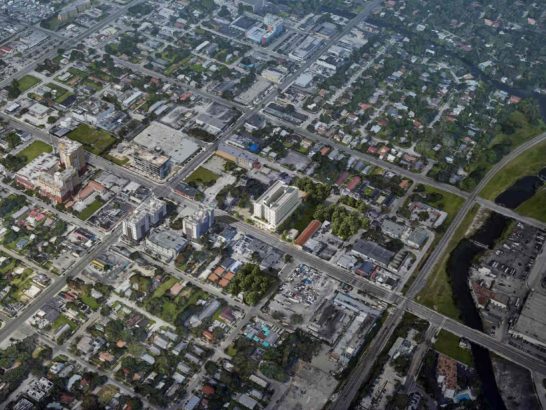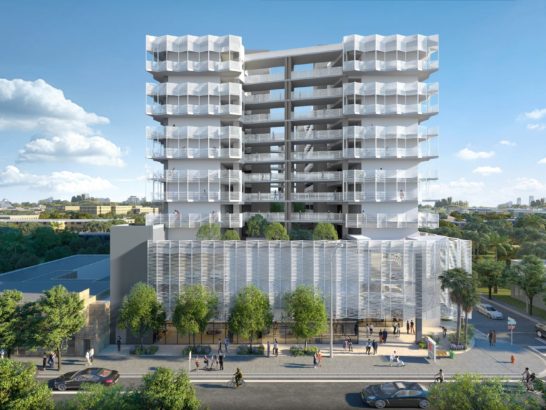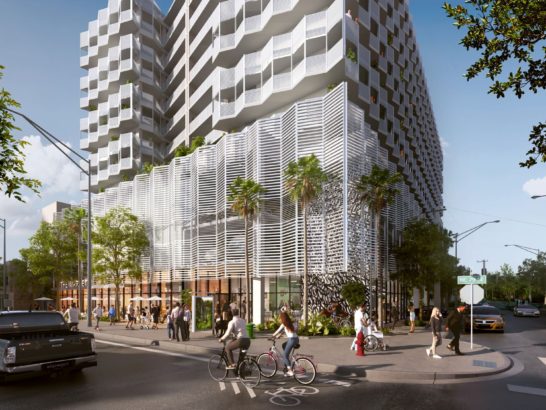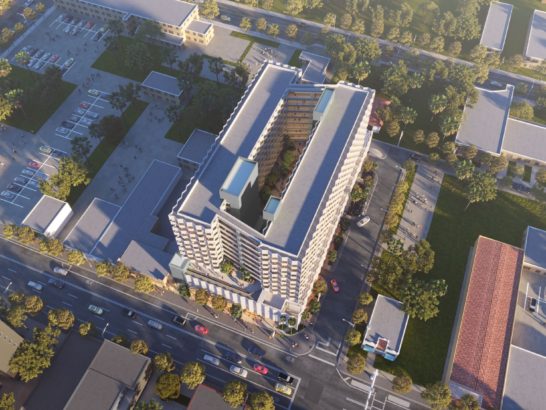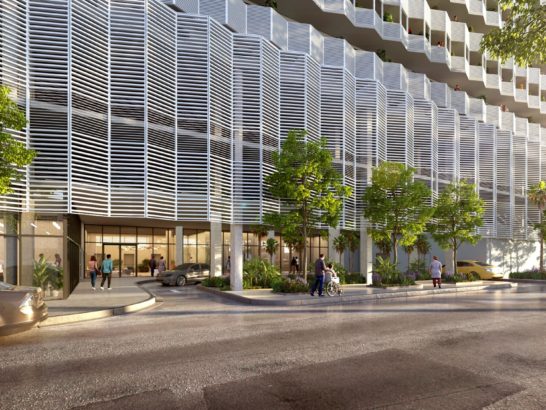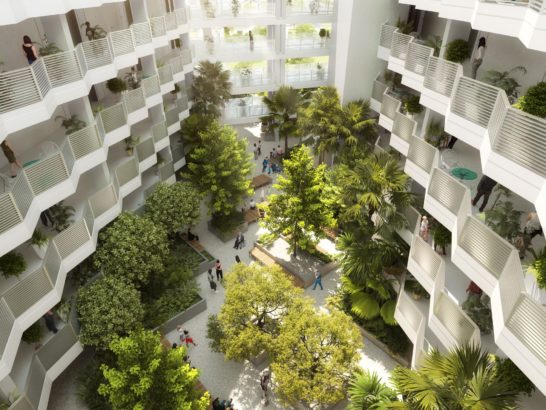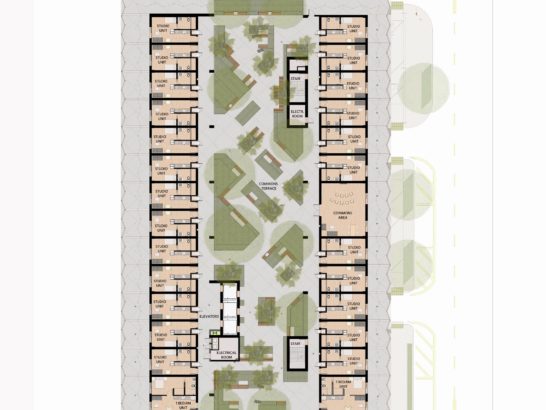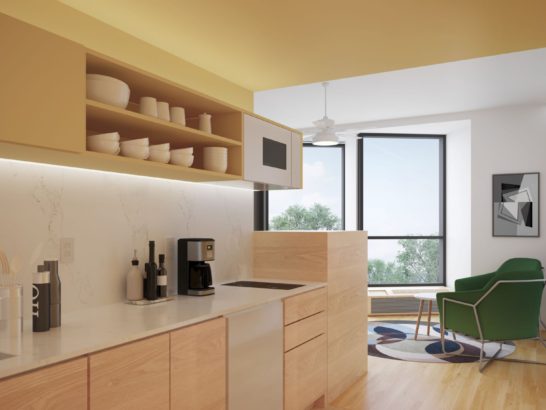-
Description
LITTLE RIVER PLAZA, located between I95 and the Atlantic Ocean in the Little River area, City of Miami, is a model for transit-oriented development of affordable sustainable housing, developed by Healthy Housing Foundation, a subsidiary of AIDS Healthcare Foundation. Located on 0.94 acres, adjacent to a bus stop and along a major transit corridor, residents will have direct access to key regional employment hubs, retail, and public transportation. Little River Plaza includes 200 parking spaces in a 3-story parking podium and a 250 micro-studio and one-bedroom apartments in a 9-story residential tower with wrap around balconies, a centralized landscaped resident plaza, community indoor and outdoor gathering spaces on each level, administration services, property and leasing offices, bike storage, laundry services and back of house. Ground floor retail, a community market, is located on 79th Street, the main east-west artery to I95.
The project’s resilient approach includes materials and construction systems that are regionally available, among other sustainable approaches, with a concrete block, beam and column and post-tension structural system. A zig-zag aluminum screen and balcony rail system reduce solar heat gain and animates the floor plan. It harkens back to the mid-century subtropical passive solar designed architecture of Florida. Interior spaces are bright, exposed concrete and wood with polished concrete floors, a Florida native landscape, colorful wood and metal benches and artist mural. As AHF/HHF’s second project in the City of Miami, it will demonstrate affordable and desirable housing in the region. Little River Plaza is slated for construction in the fourth quarter of 2023. Tenant eligibility will be based on income restrictions up to Miami-Dade County 50% AMI and below. Since 2017, Glavovic Studio has been working with the AIDS Healthcare Foundation and the Healthy Housing Foundation addressing the global homeless and affordable housing crisis through intensive collaborative design processes. This development seeks to encourage high-quality, durable, long term, sustainable, permanent supportive environments for persons experiencing homelessness.
-
Gallery
-
Related Projects

